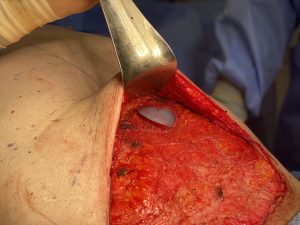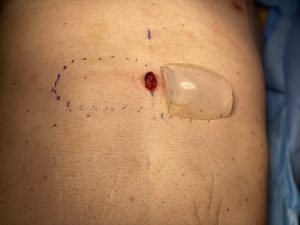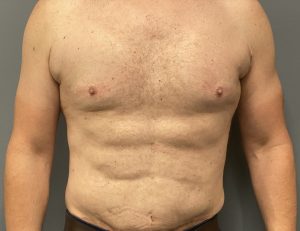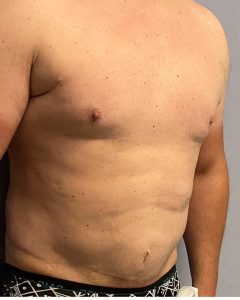Background: The appearance of an ultra fit abdomen is the ability to see the outline of the rectus muscles. While the rectus muscle is vertical in orientation it is sectioned into quadrants by horizontal tendinous fascial bands known as inscriptions. There are three in number usually located across the belly button inferiorly, the xiphoid process superiorly and middle line about halfway between these two. The physiological function of the inscriptions is to improve the biomechanics of the rectus muscle to provide varying degrees of forward flexion of the spine. (forward bending at the waist) But the visibility of the inscriptions, which typically occurs only in very lean and/or very fit patients, has always had a high aesthetic body asset.
For those seeking visible inscriptions lines (six-pack ab look) that are unable to achieve them by exercise and diet, two surgical options exist to create them. The most common and a very effective technique is liposuction. By removing subcutaneous fat over the three horizontal inscription lines and the midline vertical linea alba, the skin indentations create their appearance. The other technique are rectus muscle implants. By placing small implants under the fascia in between the inscriptions the six-pack look is created by increasing muscle size between the lines.
There are advantages and disadvantages for each type of surgical six-pack surgery as well as specific indications for each. But the best results for either is a thin subcutaneous abdominal fat layer. An interesting question is which method is better to use in a patient who has had a tummy tuck and, if implants are chosen, how should they be surgically placed?
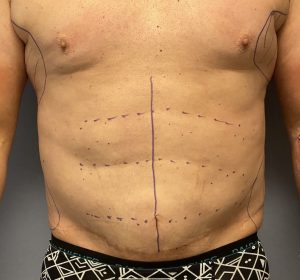
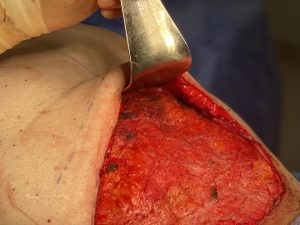
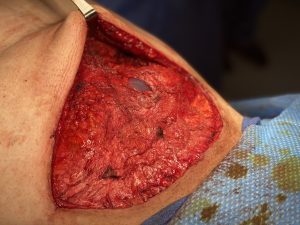
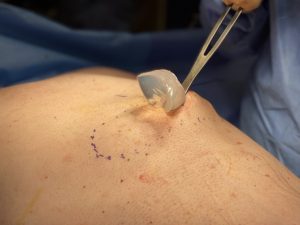
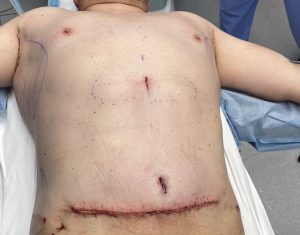
His postoperative course was complicated by an abdominal seroma and the eventual need for removal of the lower two ab implants due to extrusion. The upper four ab implants remained.
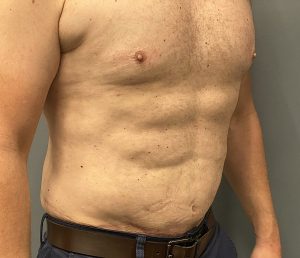
Key Points:
1) The so called six=-pack abs means that the horizontal inscriptions of the rectus muscle are seen externally on the abdominal skin.
2) Typically an abdominal six-pack look is obtained through linear liposuction to create skin adherence along the horizontal inscription and vertical fascial lines.
3) Abdominal implants achieve an enhanced muscle size between the inscription lines to achieve a six-pack look.
4) Ab implants can be placed through an existing tummy tuck scar but the risks of extrusion and seroma are increased.
Dr. Barry Eppley
World-Renowned Plastic Surgeon



